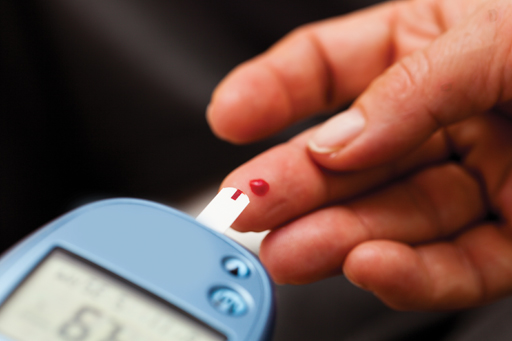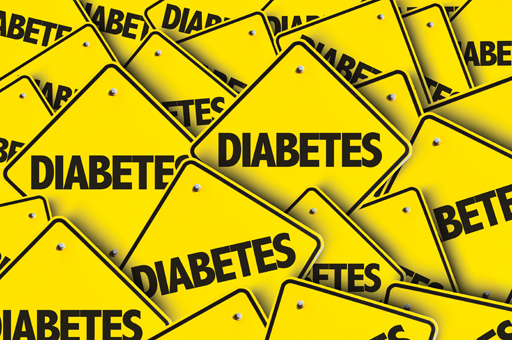Do HbA1c levels need to be monitored more often?
In Clinical
Follow this topic
Bookmark
Record learning outcomes
Daily blood glucose monitoring may be a cornerstone of management for many people with diabetes but it only offers a snapshot of diabetic control. Could HbA1c offer a longer-term and better measure of glycaemic management?

HbA1c testing at home or in community pharmacies is growing in popularity and with good reason, says Ponnusamy Saravanan, professor and honorary consultant physician in diabetes, endocrinology and metabolism at Warwick Medical School.
€Some patients only measure their [glucose] levels first thing in the morning €“ but levels can rise after their meals and, if people don't test regularly, they and their clinician will not receive a realistic picture of their glucose levels,€ he says.
€Some patients are not able to test every day, or they simply forget. Even if someone performed multiple tests throughout the day, they could still pick up quite significant variations, which could give a distorted or confusing picture of glucose levels.€ However, glycated haemoglobin (HbA1c) offers a longer-term measure of glycaemic control.
Unusual haemoglobin
In 1968, Samuel Rahbar, from the Albert Einstein College of Medicine, New York, reported isolating an €unusual€ haemoglobin from people with diabetes. Further studies confirmed that patients with diabetes showed raised levels of the haemoglobin, which was called HbA1c.
Put simply, sugars 'stick' to haemoglobin ('glycosylation') and the extent of glycosylation is proportional to the amount of sugar in the blood €“ the higher the blood glucose levels, the greater the level of glycosylation. Measuring HbA1c offers an average of blood glucose levels over the erythrocytes' lifespan of about eight to 12 weeks.
€HbA1c can provide an accurate and extremely effective overview of long-term glucose control,€ Professor Saravanan says. €There is no hiding place with HbA1c. It averages out all the variations to provide a single figure that you can compare easily to previous readings to see how glucose levels are improving or getting worse. From a clinician's point of view, this takes the guesswork out of predicting prognosis and determining the best therapy for the patient.€
Clinicians have relied on regular HbA1c measurements to assess glycaemic control since the 1980s. Currently, NICE recommends annual HbA1c checks as part of a package of care but about one in six people with type 1 diabetes and one in 20 of those with type 2 diabetes and other forms of diabetes do not receive their annual check.
€The current recommendation that HbA1c levels be monitored once a year is not enough to provide the patient with the best possible care or the clinician with the optimum information to manage the condition,€ Professor Saravanan remarks.
€A year is a long time if glucose levels are not properly controlled and, during that time, significant health damage can occur. The optimum HbA1c testing period would be every three to four months. Although increasing the frequency of HbA1c testing would initially increase the costs, in the long run the savings would be massive, and the NHS in general should welcome this.€
I can see HbA1c testing replacing daily blood glucose monitoring
Regular checks
Until more regular monitoring becomes routine, a growing number of people with diabetes are checking their glycaemic control between annual appointments using HbA1c tests at home and in community pharmacies. Sales of one of the tests (A1CNOW Self Check) are currently growing 25 per cent year-on-year, says UK distributor BHR Pharmaceuticals (bhr.co.uk).
The test, which costs £42 (excluding VAT) for a two-test pack, displays the HbA1c level based on a single drop of blood after five minutes with an accuracy of 99 per cent. HbA1c can be measured at any time of day and patients do not need to fast.
€If a GP is unable to offer testing more regularly than the guidelines, community pharmacies can offer people with diabetes the choice of more regular testing in a convenient environment, where they don't have to make an appointment or wait in a waiting room, or they can sell them a kit that they can use at home,€ Professor Saravanan says. €GPs should accept data from pharmacists and the home kits. Numerous studies validate the current point- of-care HbA1c kits, including those used for home testing.

€I have no doubt about their clinical accuracy, especially when the tests are used to monitor glycaemic control rather than to diagnose diabetes. It is not ideal that people would have to pay for these extra tests, but we all know that the NHS is under ever-increasing constraints.€
Community pharmacists and other healthcare professionals should, however, ensure people with diabetes and their carers understand how to use and interpret the test, he adds.
€Generally, I find that if I spend a bit of time explaining the benefits of regular testing, patients are usually empowered to take it on and many of them self-monitor,€ says Professor Saravanan. If the benefits of regular testing at home or in pharmacies were properly explained to patients by pharmacists, I am sure the demand would be significant.€
The way forward?
HbA1c testing may replace blood glucose monitoring, for some people at least. €Increasingly, certain sectors of the diabetes community are not being offered daily glycaemic monitoring,€ Professor Saravanan comments.
€Studies show that, for example, if you have type 2 diabetes, are not at risk of hypos, and are on first-line therapies €“ such as metformin or DPP-4 inhibitors €“ then daily glycaemic monitoring is not required. Indeed, some CCGs have already stopped providing daily glycaemic monitoring on the NHS for this group of people. I can see this trend continuing to a stage where, for a certain section of the diabetes population, HbA1c testing replaces daily blood glucose monitoring.€
Professor Saravanan hopes that the growing use of home and pharmacy-based HbA1c testing will mean more patients reach their treatment target. After all, tight glycaemic control reduces the risk of microvascular and macrovascular complications and mortality associated with diabetes. There is, however, a marked discrepancy between the proportion of patients who receive their annual test and those who reach their treatment goal.
According to the National Diabetes Audit, for instance, only 29.2 per cent of type 1 diabetes patients and 65.7 per cent of those with type 2 diabetes and other forms of diabetes in England and Wales attained the HbA1c target (‰¤ 58mmol/mol) in 2015-16.
Hopefully, almost 50 years after Rahbar reported isolating an €unusual€ haemoglobin, home- and pharmacy-based measurements will help realise the full potential of HbA1c testing to reduce the distress, disability and deaths caused by diabetes.
Hypos in hospital
One in five inpatients with diabetes have a hypoglycaemia episode during a hospital stay, according to figures from the latest National Diabetes Inpatient Audit.
More than a quarter (27 per cent) of inpatients with type 1 diabetes had a severe hypo during a hospital stay, with the highest proportion (30 per cent) taking place between 05:00 and 08:59am.
Hypoglycaemia occurs when the blood glucose levels of someone with diabetes is too low, usually below 4mmol/L. It can happen for a number of reasons, including missing meals, not having enough carbohydrates or taking more insulin than needed. If a hypoglycaemia episode is not treated, it could lead to blurred vision, confusion and seizures, and severe hypoglycaemia can even lead to loss of consciousness and coma.
€It is vital healthcare professionals are aware of patients who are at risk of hypos, and put in place appropriate measures to support people with diabetes to prevent and treat them while in hospital or in a clinical setting,€ says Douglas Twenefour, deputy head of care at Diabetes UK.
€Too many hypos happen at night, which is completely unacceptable. Hospitals need to put in place practical ways to prevent these from happening, including making bedtime snacks available for appropriate patients with diabetes.€
